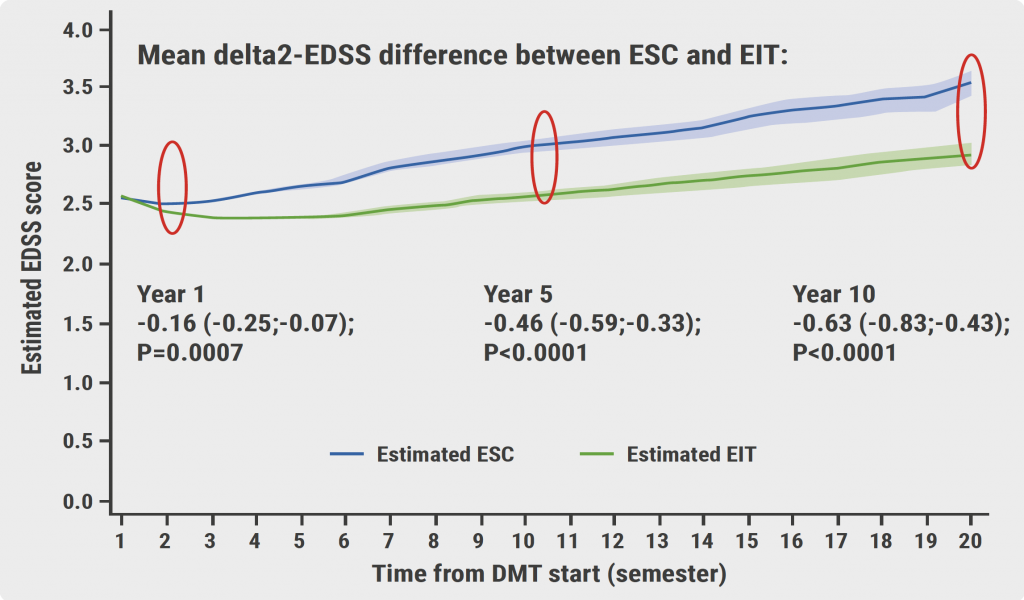Baseline MRI and longitudinal clinical data were used from 988 participants of the randomised, double-blind, placebo-controlled ASCEND trial, which evaluated the effect of natalizumab on disease progression in secondary progressive MS. Spatial ICA was applied to baseline structural grey matter probability maps to identify co-varying grey matter regions. Correlations between ICA components and EDSS, 9-Hole Peg Test (9HPT), and Symbol Digit Modalities Test (SDMT) scores were computed.
A total of 15 clinically relevant networks of co-varying grey matter patterns were identified. Compared with conventional MRI measures, SDMT and 9HPT baseline scores correlated more strongly with ICA components, especially main basal ganglia components including the thalamus, caudate, putamen, and frontal and temporal lobes. EDSS correlated more closely with an ICA component involving cerebellum, brainstem, and temporal and parietal lobes (R=-0.11; P<0.001). EDSS progression was predicted by baseline caudate volume (HR 0.81; P<0.05). Descending SDMT scores were best predicted by 2 ICA components (HR 1.26; P<0.005; and HR 1.25; P<0.005). Two other ICA components predicted worsening of 9HPT scores (HR 1.30; P<0.01; and HR 1.21; P<0.05).
- Colato E, et al. Predicting disability progression and cognitive worsening in multiple sclerosis with gray matter network measures. MSVirtual 2020, Abstract PS07.03.
Posted on
Previous Article
« Lesion-specific perfusion levels affect myelin loss and repair Next Article
Assessing demyelination using myelin water imaging »
« Lesion-specific perfusion levels affect myelin loss and repair Next Article
Assessing demyelination using myelin water imaging »
Table of Contents: MS Virtual 2020
Featured articles
COVID-19 and MS
Biomarkers
Treatment Strategies and Results
Management of progressive MS with approved DMT
Novel Treatment Directions
Neuromyelitis Optica Spectrum Disorders
Miscellaneous Topics
Related Articles
September 10, 2020
Serum NfL predicts long-term clinical outcomes in MS

December 4, 2023
Early intensive treatment enhances long-term clinical outcomes
November 8, 2019
Targeted therapies for NMOSD in development
© 2024 Medicom Medical Publishers. All rights reserved. Terms and Conditions | Privacy Policy

